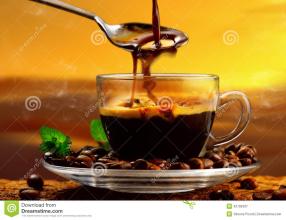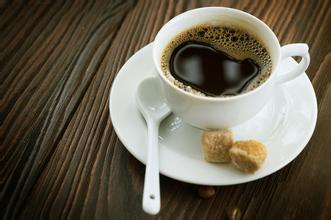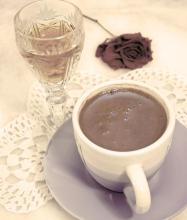Introduction to the taste characteristics of Arusha Coffee Manor varieties with mild and non-irritating flavor
China Coffee Network
The Tanzanian people are good at singing and dancing, and dancing is an indispensable part of life. There are more than 120 tribes in Tanzania, each of which has its own traditional dance, some showing people's life process from birth to death, and some major social activities, such as war, harvest, etc., in addition to the performance of field farming, hunting, worship and other contents. Among them are the famous "Ukara" ── in the coastal areas of Tanga District, a hunter's dance in which hunters hold bows and arrows and squat on their legs, and women hold meat-filled winnows and wiggle their hips. The traditional dance "Mweisai", which is popular in Zanzibar, is the most representative dance on the island of Pemba, and has become one of the programs often performed by many professional groups in the country. During the dance, the male actor's calf is wrapped in a diamond-shaped shell made of dozens of palm leaves, containing a hard plant seed called Moussevi. the movements are mainly foot management and crotch twisting. The rhythm of the dance gradually changed from slow to cheerful, and the dance was stretched and implicit. The popular "Bugo Bogob" in the mainly agricultural Mwanza and Sinyenga regions of northern Tanzania is also a traditional and distinctive rural dance, usually performed before farming or reclaiming the land to celebrate and pray for a bumper harvest. The actor holds a hoe or does ploughing, his feet are mainly dotted, his chest and crotch keep swinging back and forth, and the Tanzanian government attaches great importance to the development of national culture. there are the National Arts Council, the State Sri Lankan language Committee, the Library Service Council and the Folk Culture Association. Tanzania implements a three-tier system of primary, secondary and university education and 10 years of national compulsory education (7 years in primary school and 3 years in secondary school). With the exception of private schools, all kinds of schools offer free education. The government allows individuals and public institutions to set up various cultural schools and sets up grants to help poor students complete their higher education. Dar es Salaam University is the only comprehensive university in the country, with more than 10 colleges and universities and more than 20 normal universities. The adult literacy rate reached 90.4%, one of the lowest illiteracy rates in Africa.
The Tanzanian government attaches importance to the development of education and has built many universities in the new capital Dorma, covering an area of more than 70 square kilometers, which can accommodate 40000 students and increase the enrollment rate of the University of Tanzania by more than 10%. It is the largest comprehensive university in central and eastern Africa. According to the long-term plan, the total investment in construction will reach 1.5 billion US dollars.
The unveiling ceremony of the Confucius Institute of the University of Dodoma in Tanzania was held in the capital Dodoma on April 28, 2013, marking the official inauguration of the first Confucius Institute in Tanzania. The Confucius Institute is jointly built by Dorma University and China Zhengzhou Institute of Aviation Industry Management (Zhengzhou Institute of Aviation). The two sides signed a cooperation framework agreement on Confucius Institutes in April 2011. The establishment of the Confucius Institute will help consolidate and promote Tanzania-China relations and enhance the opportunities for exchanges between the peoples of the two countries.
Coffee from Tanzania has long been loved by Europeans and is among the most famous products. Europeans give Tanzanian coffee the nickname "coffee gentleman", and Chinese coffee connoisseurs call it the "coffee swordsman" with the mocha of the "King of Coffee" and the "Lady of Coffee".
Mount Kilimanjaro in Tanzania is 5895 meters above sea level and connected to Mount Meru. It is the main production base of Kilimanjaro coffee. Mount Kilimanjaro is the highest peak on the African continent and the only snowy peak on the earth located on the equatorial line. It is "the roof of Africa" and "Snow White on the equator". The rich volcanic ash gives the coffee here a strong texture and soft acidity, with the characteristics of typical African coffee beans. Kilimanjaro AA is the highest grade of beans with high quality in all aspects. Medium or more moderate after baking has a strong aroma. Tanzania is a potential coffee for individual or iced coffee, but sometimes its flavor is not really shown. One reason is that Tanzania does not have the same road infrastructure as Kenya, and coffee in containers ages (or at a high temperature) during transportation. I often drink very good Tanzanian samples, but sometimes I also drink very bad coffee. The problem is that Tanzania only knows that no matter whether the quality is good or bad, they can make a profit from the beans. So what is the motivation for locals to pick and take good care of coffee in time to prevent such defective beans?
Blackburn Estate from Ngorogoro has always been an excellent variety and has the highest evaluation in recent memory. The Ruvuma producing area also has a good flavor, which is the southern coffee with the northern gene. The beans of Kibo are bulky and seem to have been cooked at high temperature. The coffee in the south is clean and full, and its mild and unexciting flavor is second only to Kenya. In the past, we have had a small number of caffeine beans from Nkoanekoli and Ngorongoro that represent a step forward compared to other producing areas.
So please remember that if you have a Tanzanian spot in front of you now, you have to put aside my mockery because it must be of good quality. Most of the good Tanzanian coffee comes from Mt in the north. Kilimanjaro, Moshi, Mbeya producing areas and Songera producing areas flowing south to the Ruvuma River and Ruvuma basins

Important Notice :
前街咖啡 FrontStreet Coffee has moved to new addredd:
FrontStreet Coffee Address: 315,Donghua East Road,GuangZhou
Tel:020 38364473
- Prev

Introduction to the characteristics of coffee flavor and taste varieties in Xuemai Manor with rich and balanced taste
The quality of Bolivian coffee in the early days of China Coffee Network was low, and the market situation was very poor. Usually the picked coffee fruit is bumped all the way to the processing plant after a simple peeling treatment. Due to the imperfect infrastructure, the traffic is underdeveloped. Coffee farmers have to overcome the rugged mountain road and transport the beans to the higher altitude area of La Paz for washing. If the coffee fruit can't reach
- Next

Introduction to the varieties of Fuyin Manor coffee with unique flavor and mellow taste.
This is the natural fermentation method that was once scoffed by Americans. It is said that when Americans heard of such a way of making coffee, it was regarded as a fantasy. It was not until it was reported by National Geographic magazine that they became interested in it. Coffee bean screening: this digestion process, so that coffee beans have an unparalleled magic change, the flavor tends to be unique, taste
Related
- Does Rose Summer choose Blue, Green or Red? Detailed explanation of Rose Summer Coffee plots and Classification in Panamanian Jade Manor
- What is the difference between the origin, producing area, processing plant, cooperative and manor of coffee beans?
- How fine does the espresso powder fit? how to grind the espresso?
- Sca coffee roasting degree color card coffee roasting degree 8 roasting color values what do you mean?
- The practice of lattes: how to make lattes at home
- Introduction to Indonesian Fine Coffee beans-- Java Coffee producing area of Indonesian Arabica Coffee
- How much will the flavor of light and medium roasted rose summer be expressed? What baking level is rose summer suitable for?
- Introduction to the characteristics of washing, sun-drying or wet-planing coffee commonly used in Mantenin, Indonesia
- Price characteristics of Arabica Coffee Bean Starbucks introduction to Manning Coffee Bean Taste producing area Variety Manor
- What is the authentic Yega flavor? What are the flavor characteristics of the really excellent Yejasuffi coffee beans?

